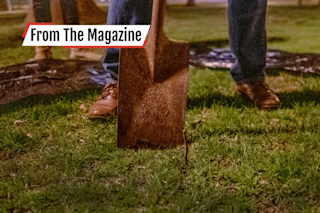In June archaeologist Ian Kuijt at the University of Notre Dame and colleagues reported that they had uncovered the world’s earliest known granaries, located at the Dhra archaeological site on the shore of the Dead Sea in Jordan. In a paper published in Proceedings of the National Academy of Sciences, the team describes food storage structures dating back 11,000 years, a millennium before humans were thought to have domesticated crops. Analysis of grains from the site suggests that settlers there stored a mix of wild and cultivated barley, along with an early variety of wheat.
“The surprise is not only that they were storing food but that they were storing it in such a sophisticated way,” Kuijt says. The granary floors at Dhra were elevated, most likely to keep out mice and to prevent spoilage from dampness; they were also slightly sloped, perhaps for drainage. By providing a buffer against ...














